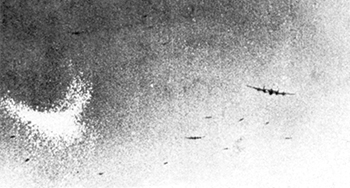Joan Curran
HMCS Haida National Historic Site
Protecting ships and aircraft with radar chaff

Joan Elizabeth Curran was a Welsh scientist who played a key role in World War II. Curran attended the University of Cambridge where she studied for an honours degree in physics. However, she was not awarded her degree at the time as women were not allowed to receive one from the University of Cambridge.
In war time - and particularly during D-Day – Curran’s efforts were instrumental, specifically her development of radar chaff technology. The radar chaff was used by aircraft and ships. Radar chaff allowed them to spread a cloud of small, thin pieces of aluminum, metallized glass fibre or plastic, which distracted enemy guided missiles and prevented radar detection.
HMCS Haida tested the effectiveness of radar chaff in May 1944 during Operation Moonshine. Due to the success of Haida’s test, other ships went on to use radar chaff on June 6th, 1944 to impersonate an incoming naval attack at Pas de Calais. This technique proved to be very effective as German tanks ended up being stationed at Pas de Calais instead of Normandy.
Later, Curran was awarded an honourary Doctor of Laws by the University of Strathclyde.
Curran earned a reputation for being flawless and skillful with scientific equipment. Her contributions to the war and science, even with the obstacles she faced, will forever be remembered.
More information:
- Date modified :